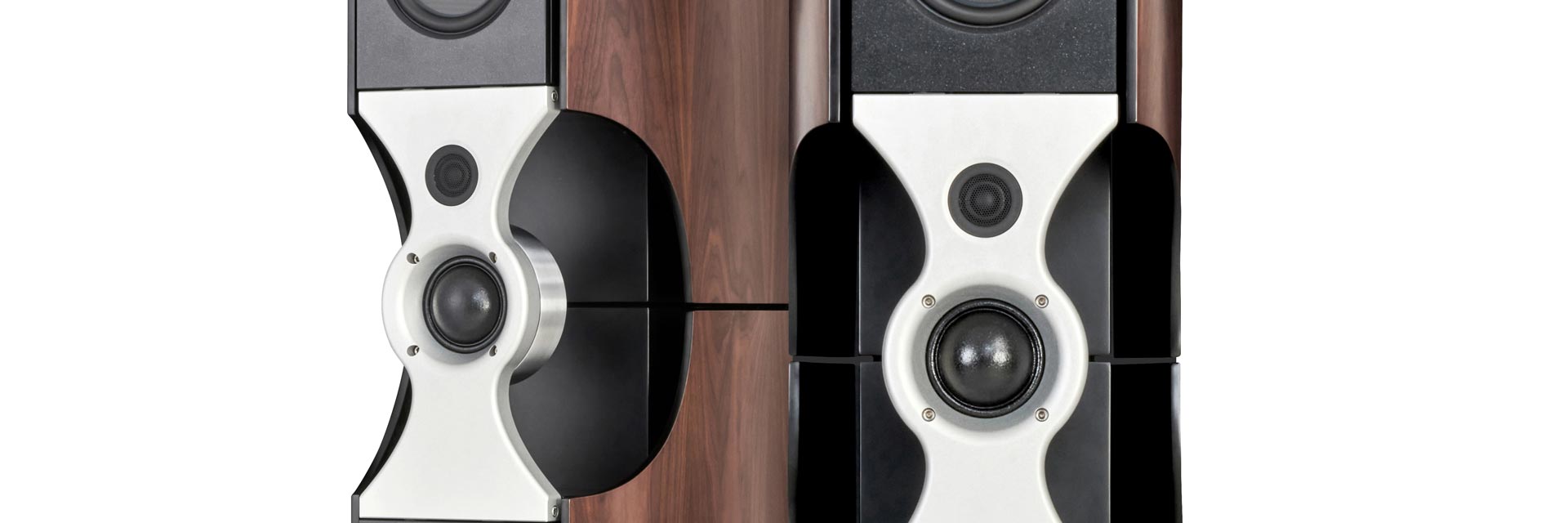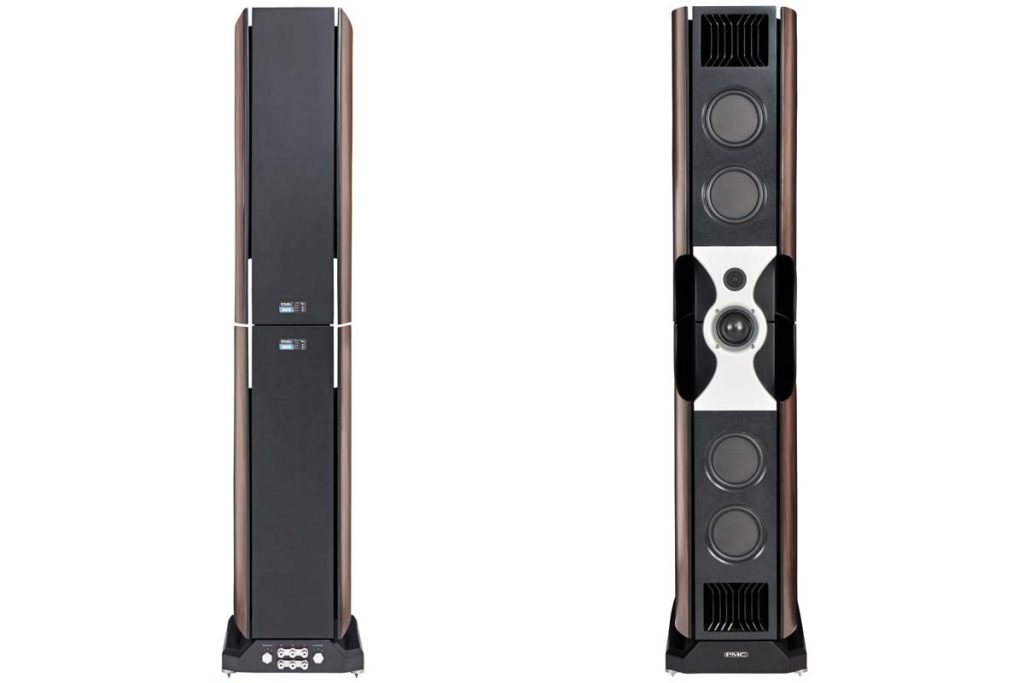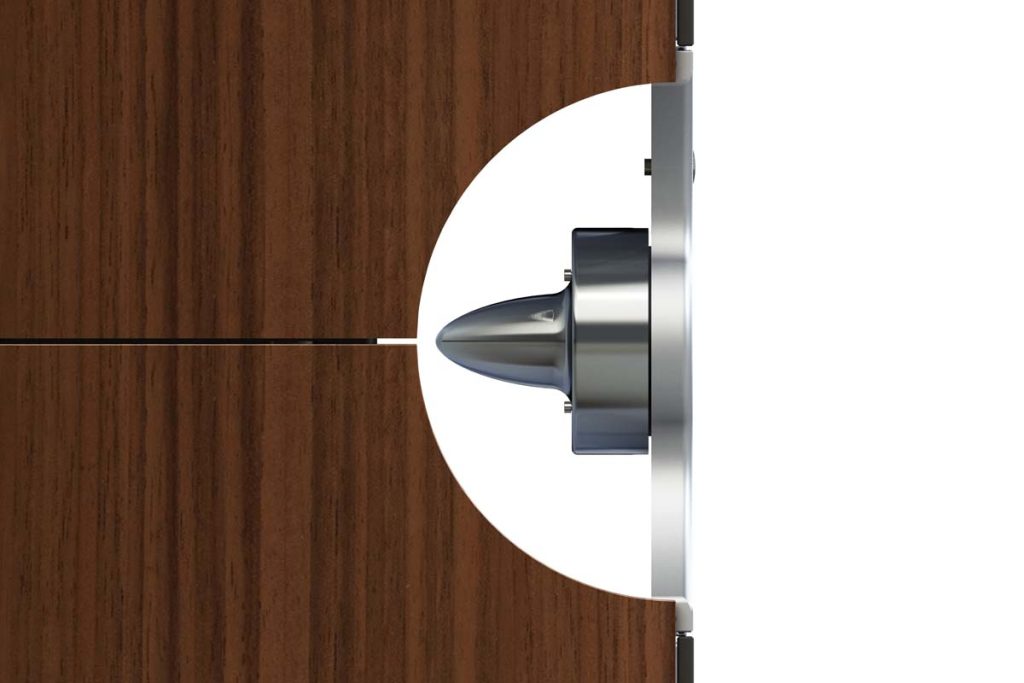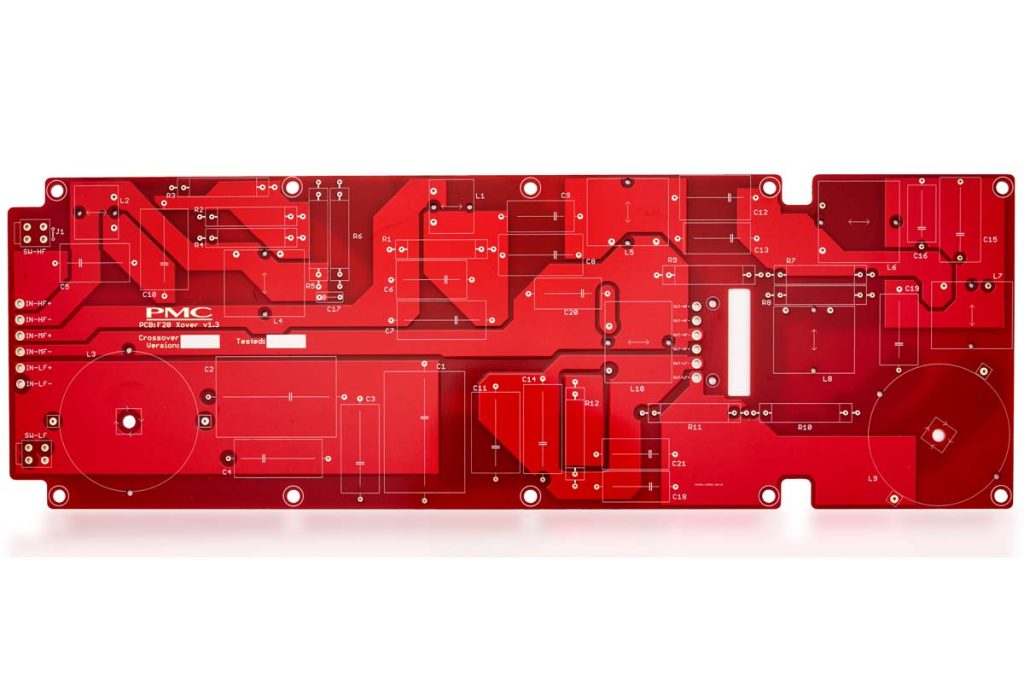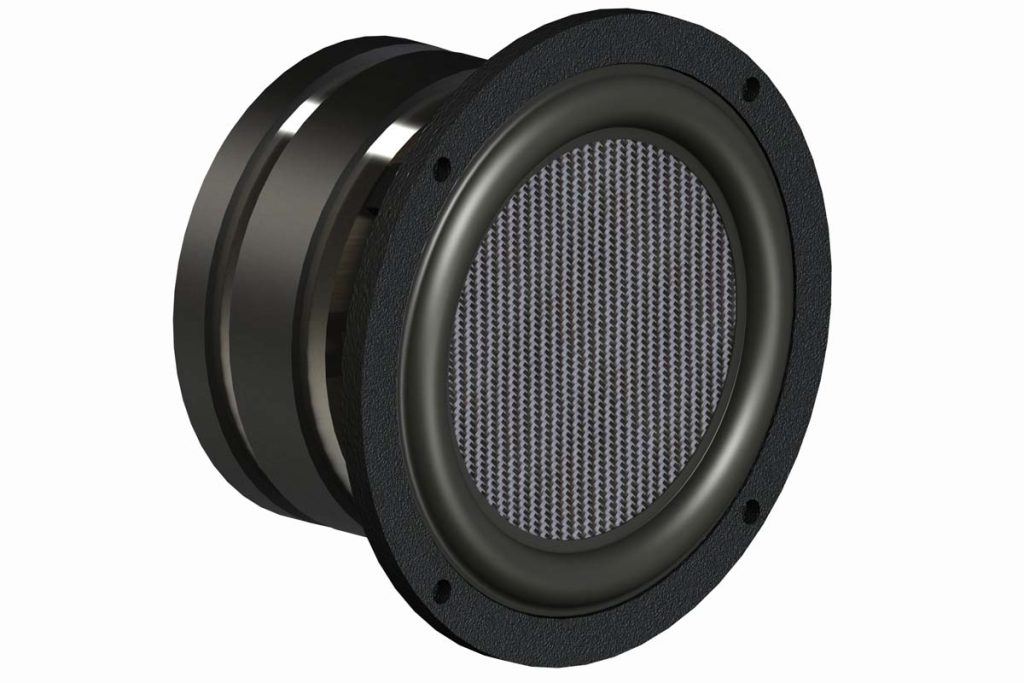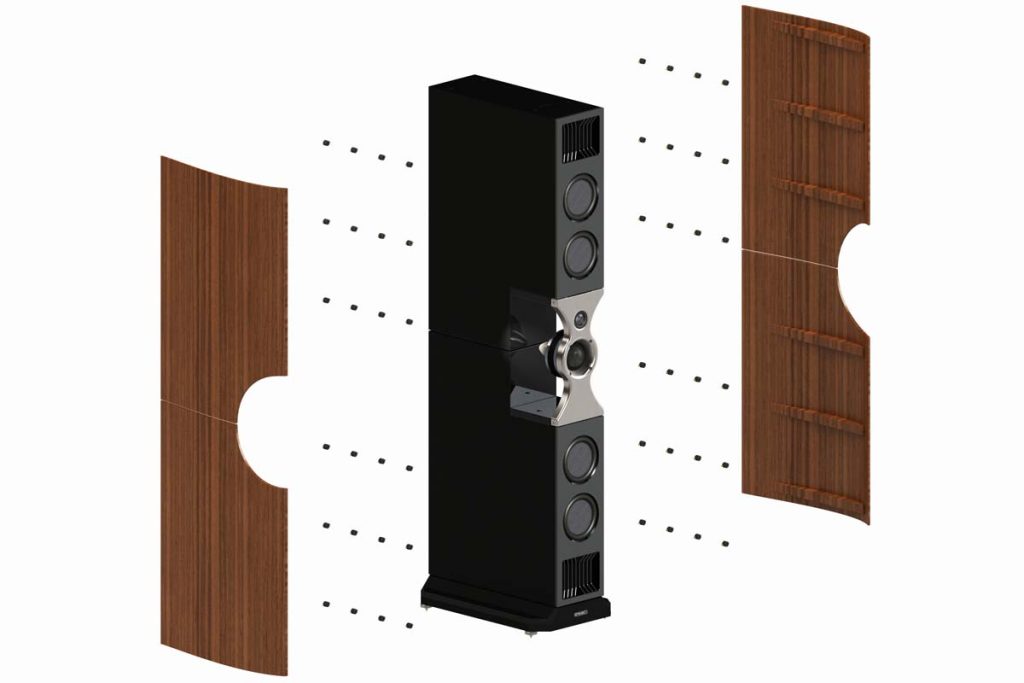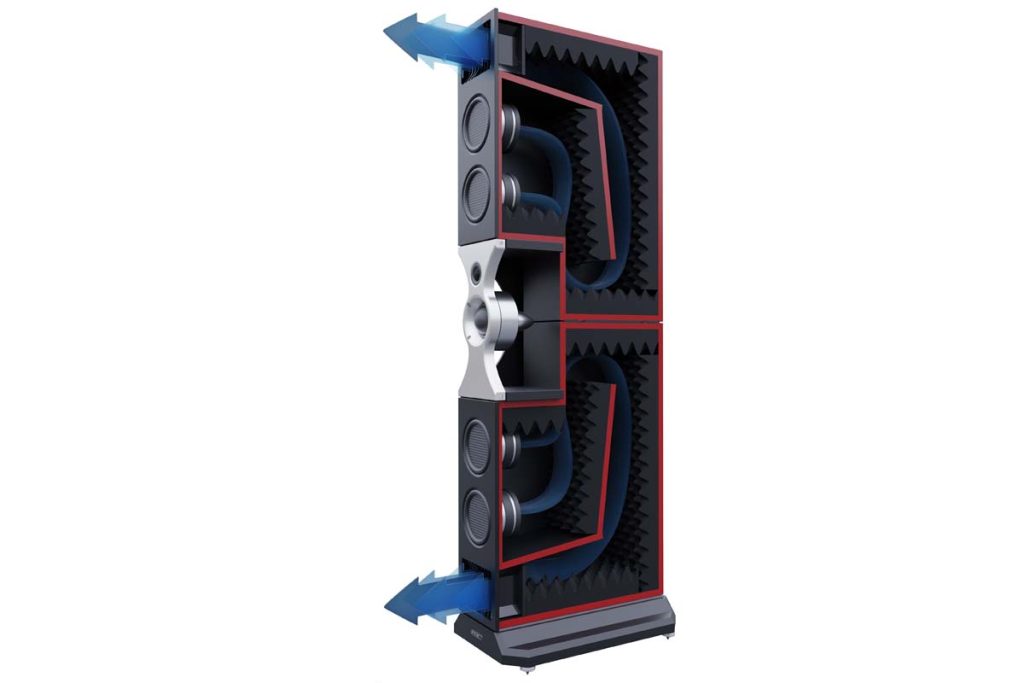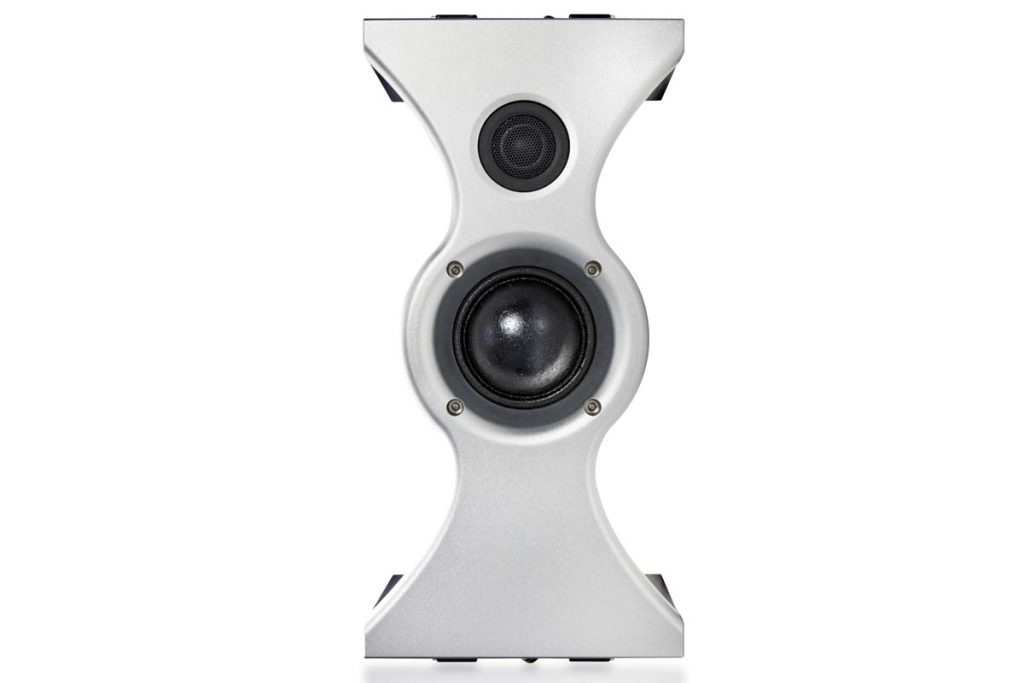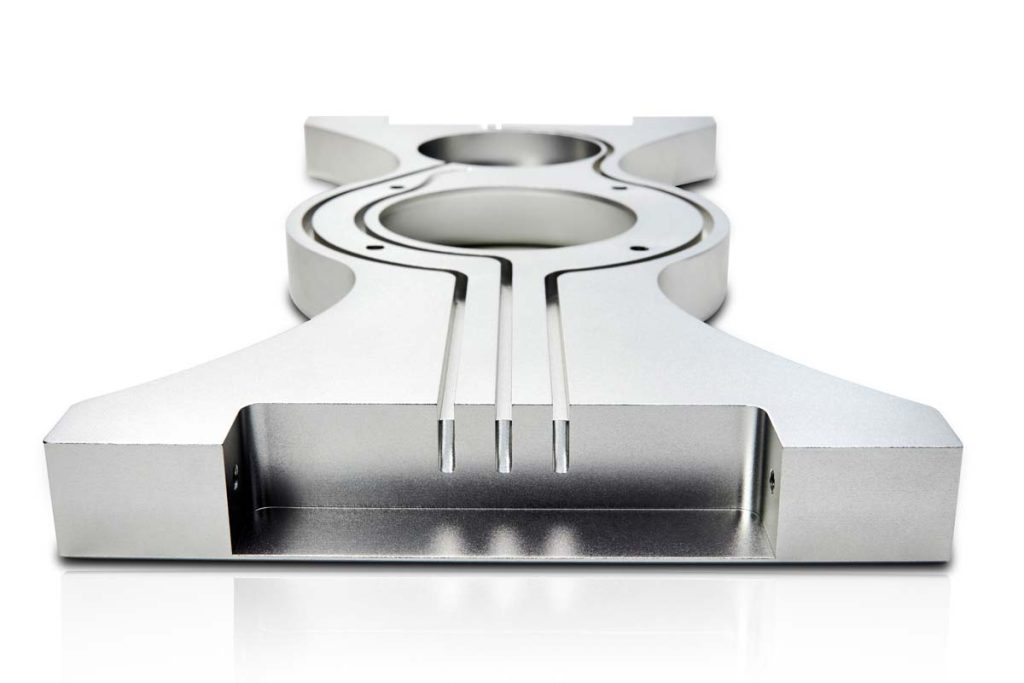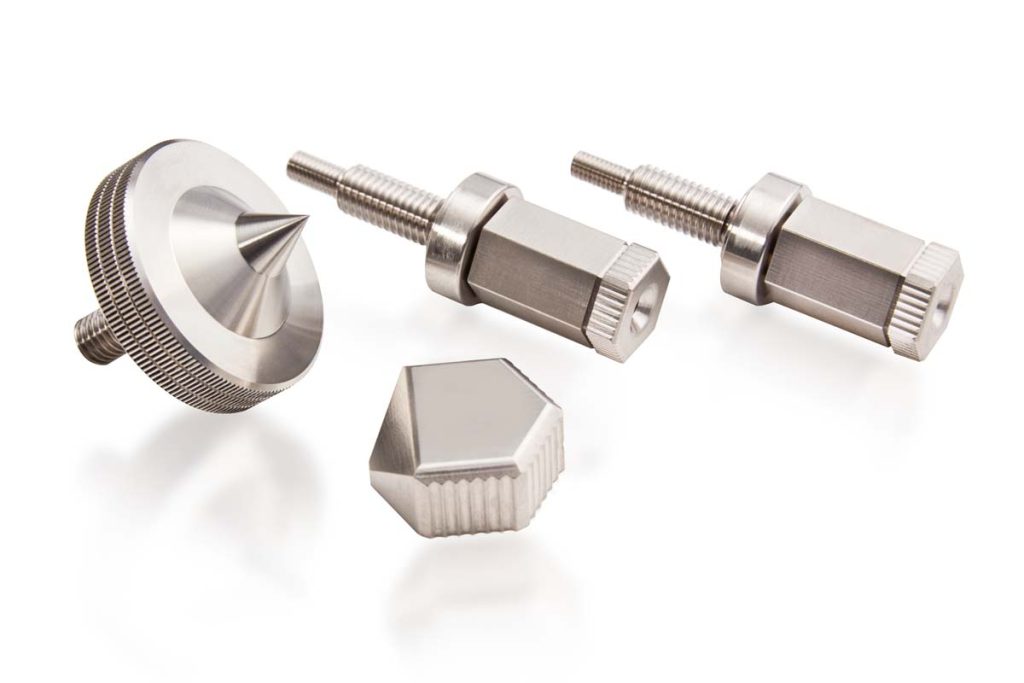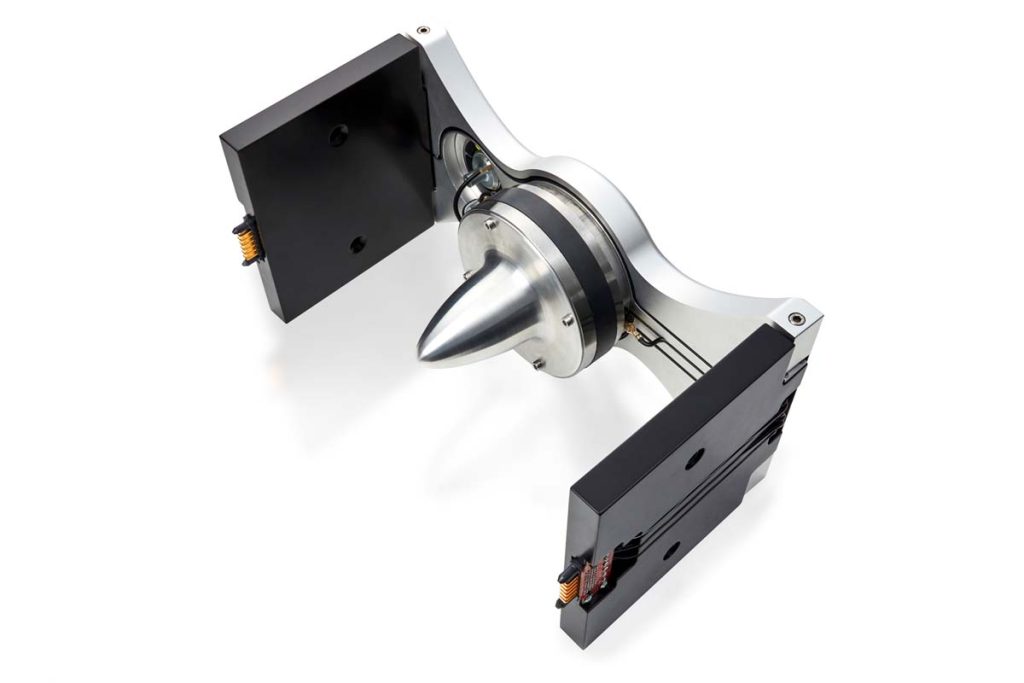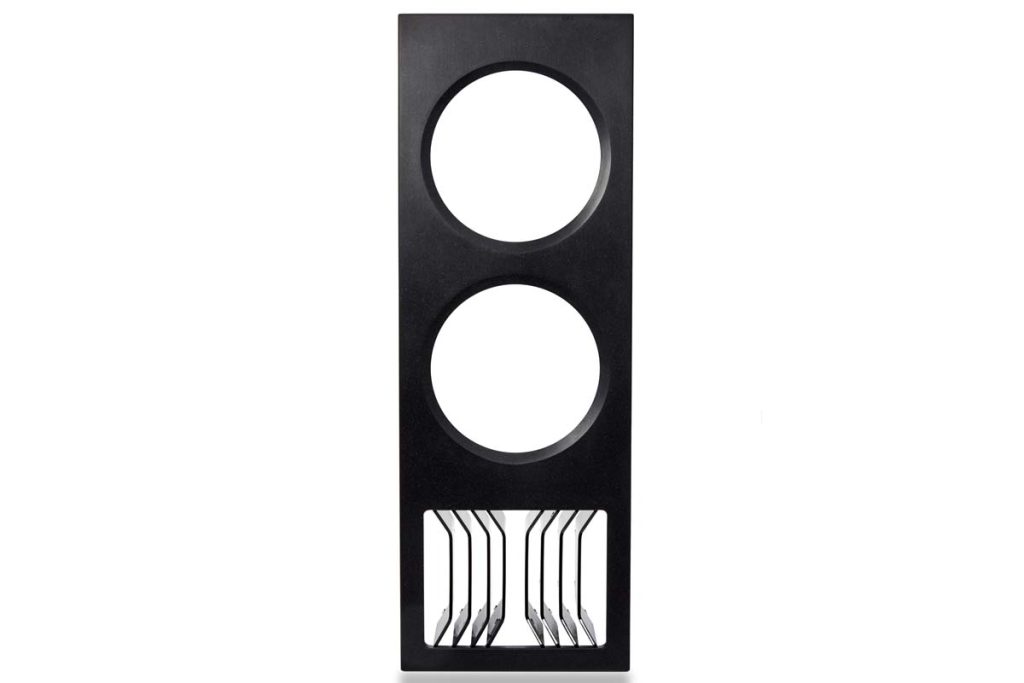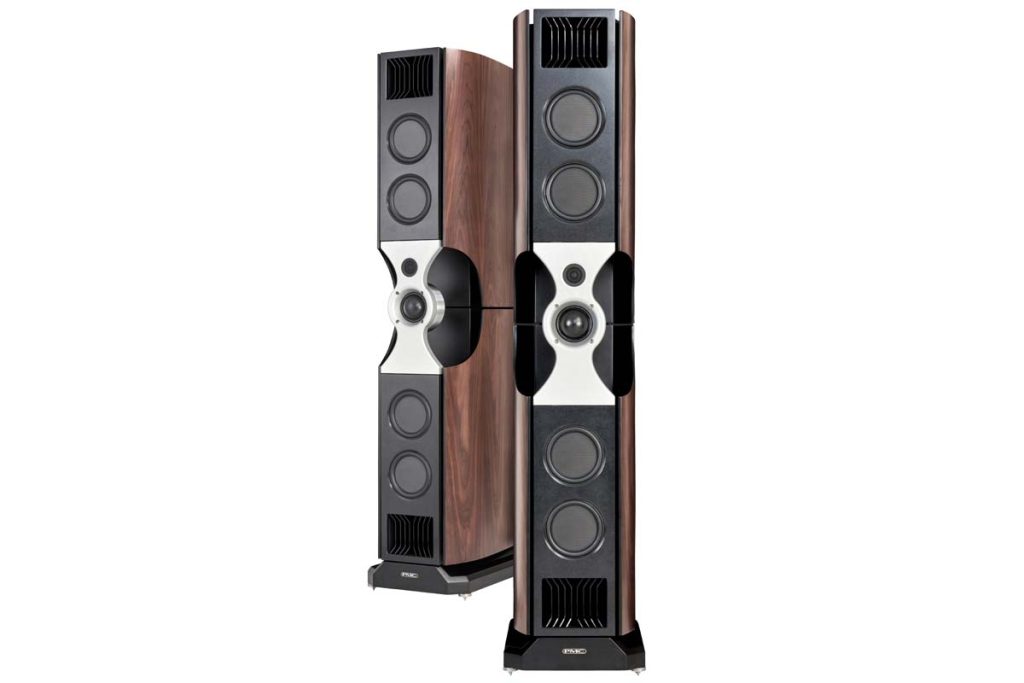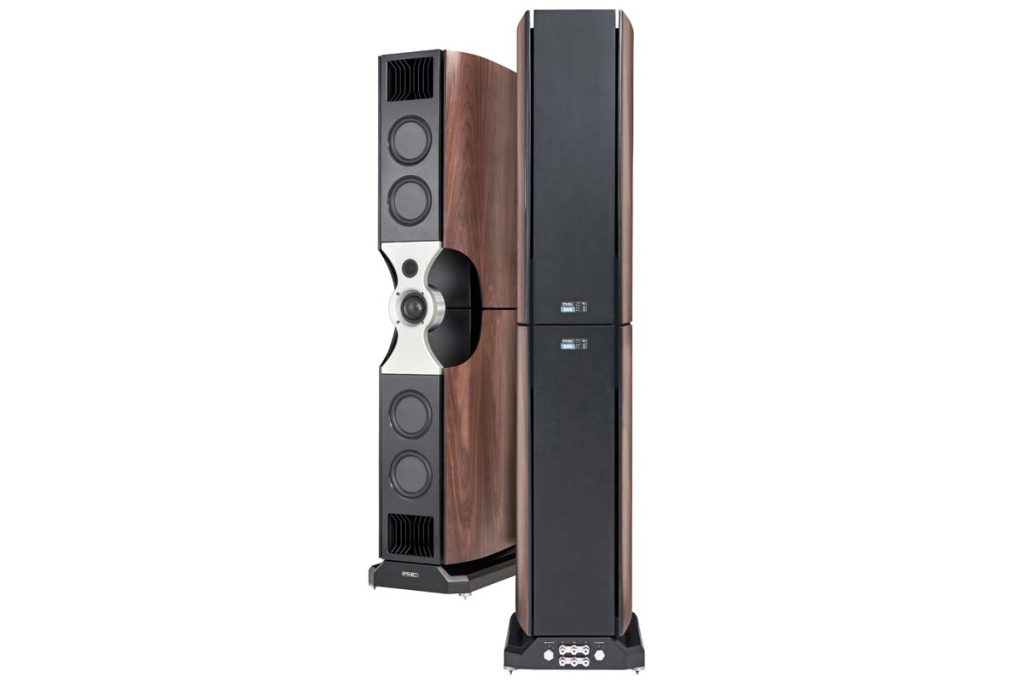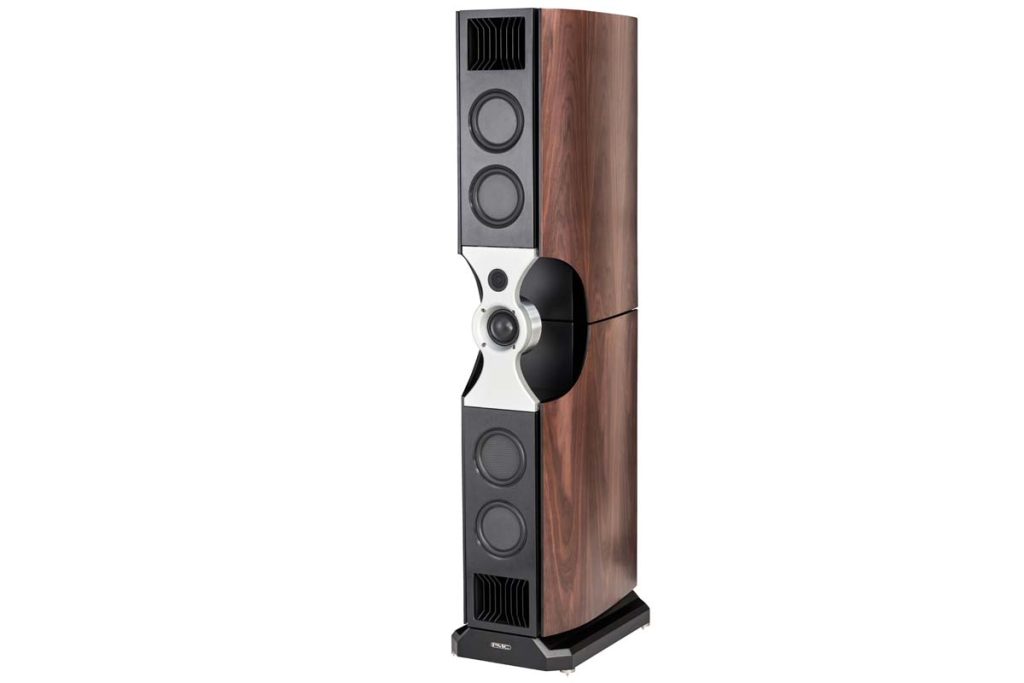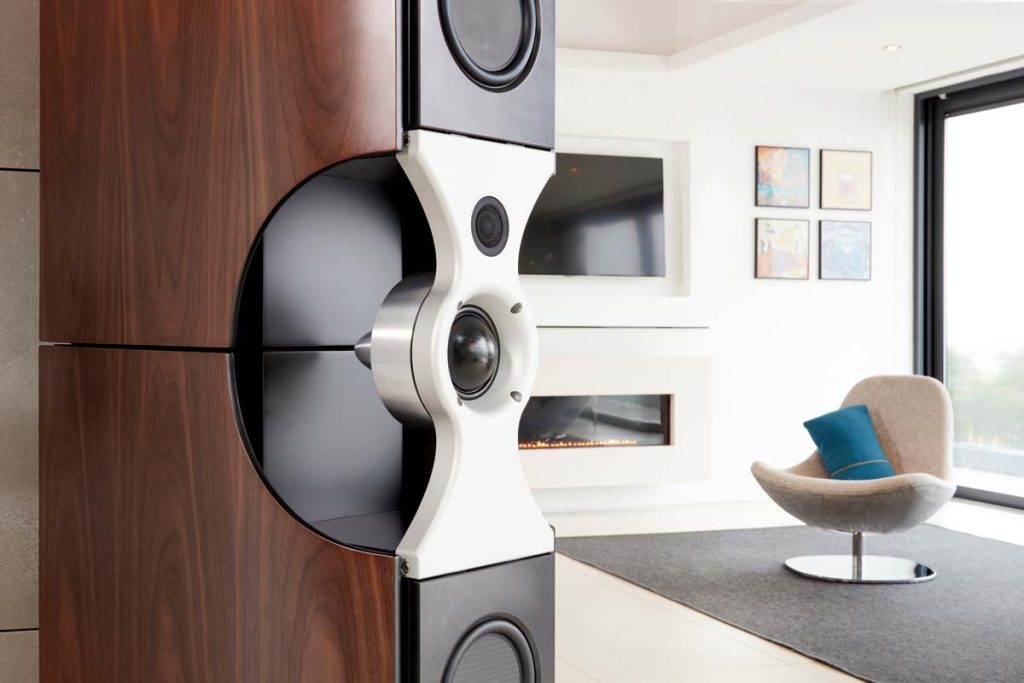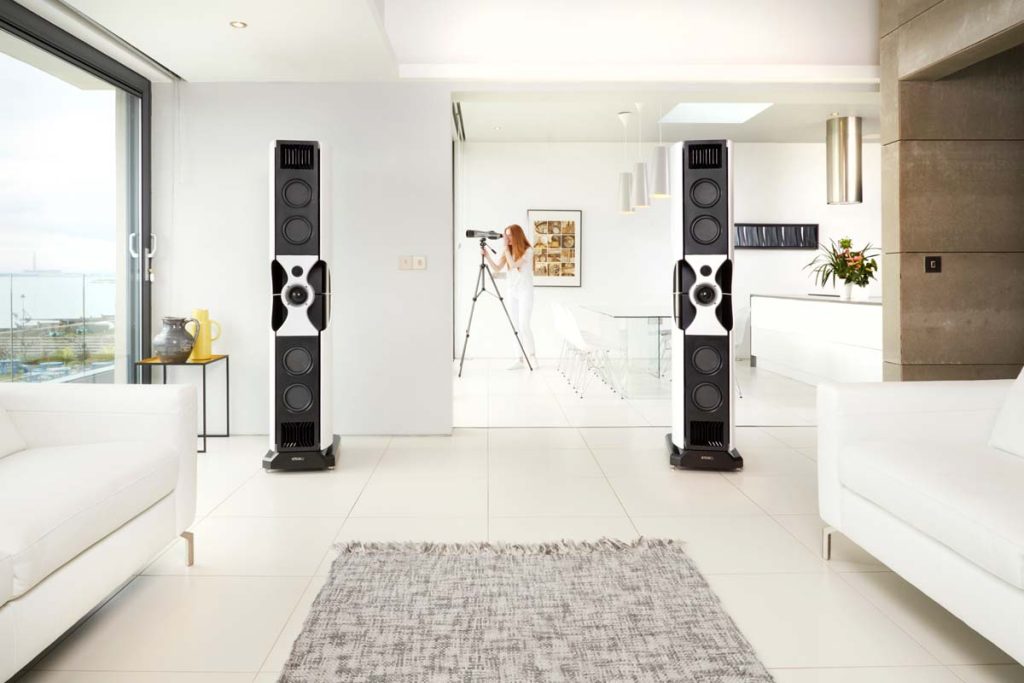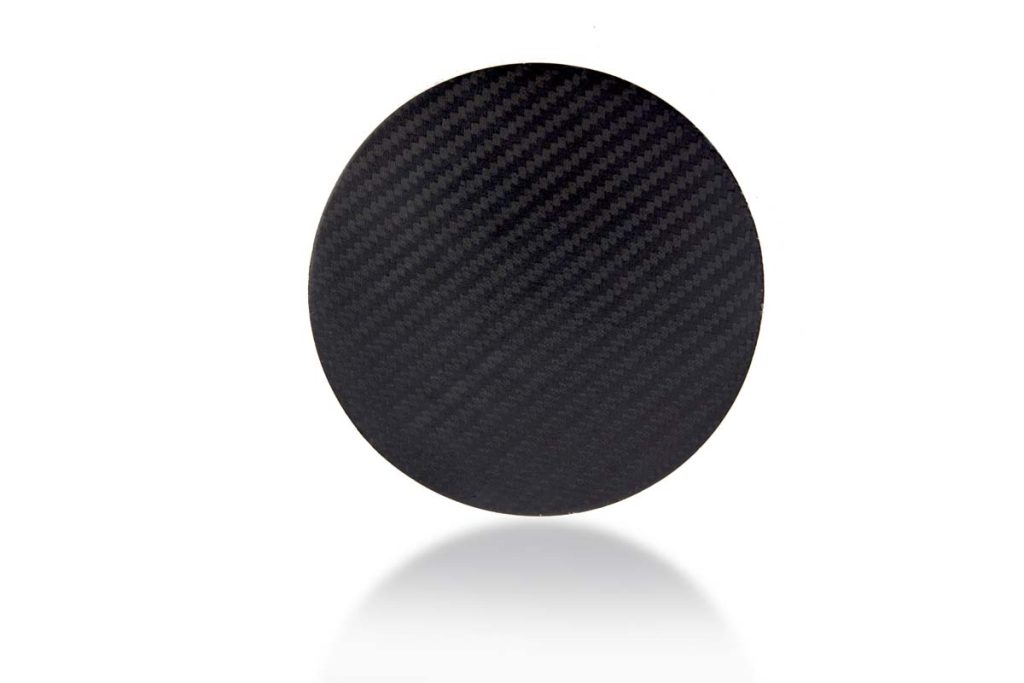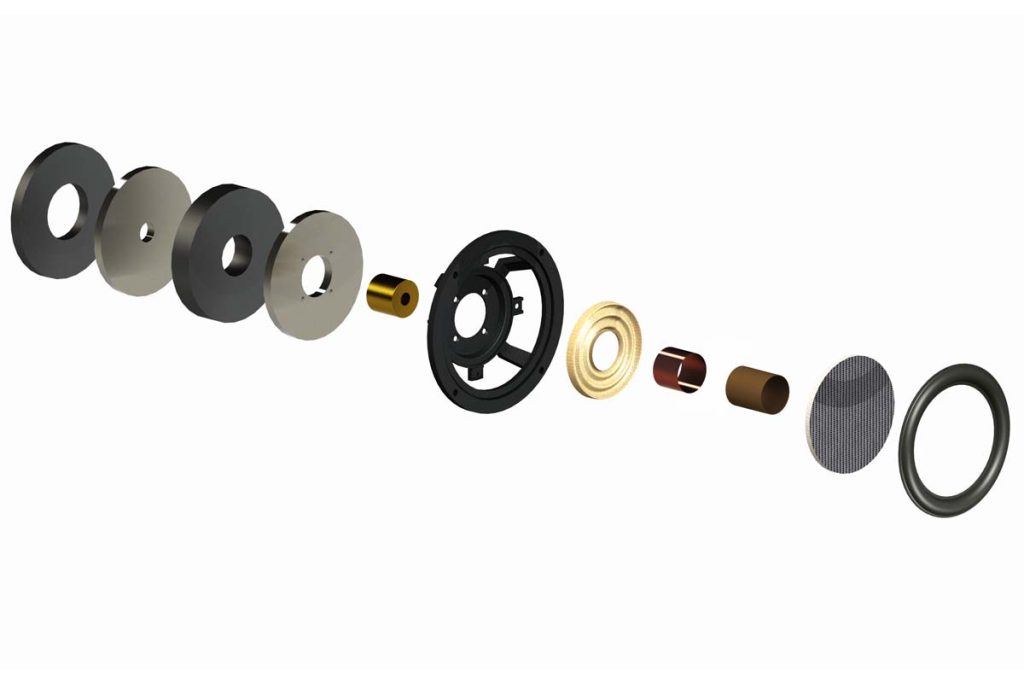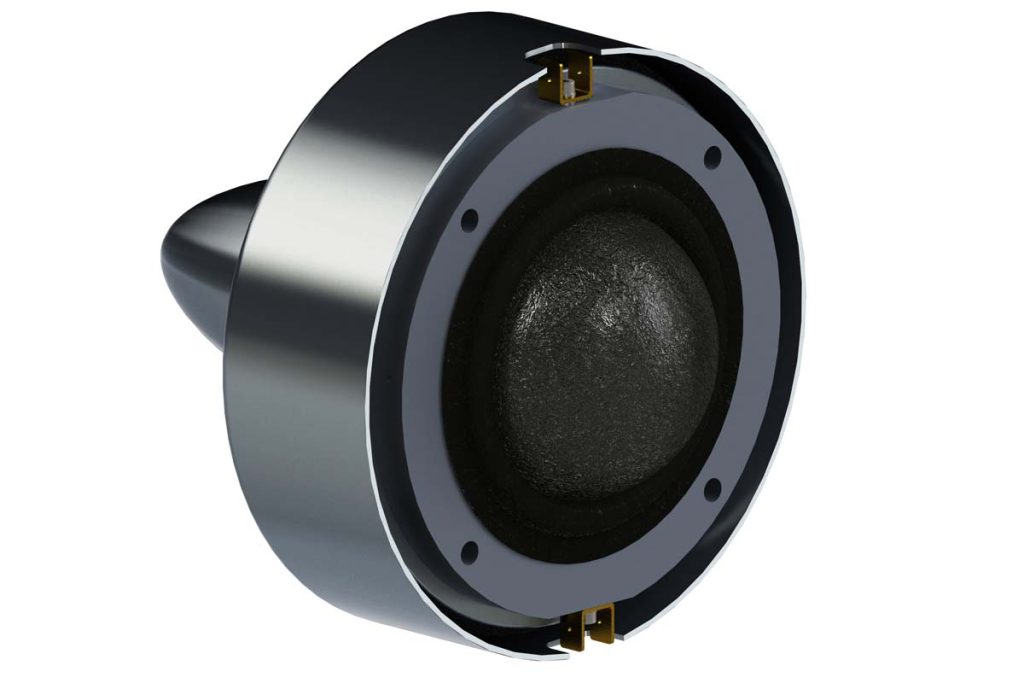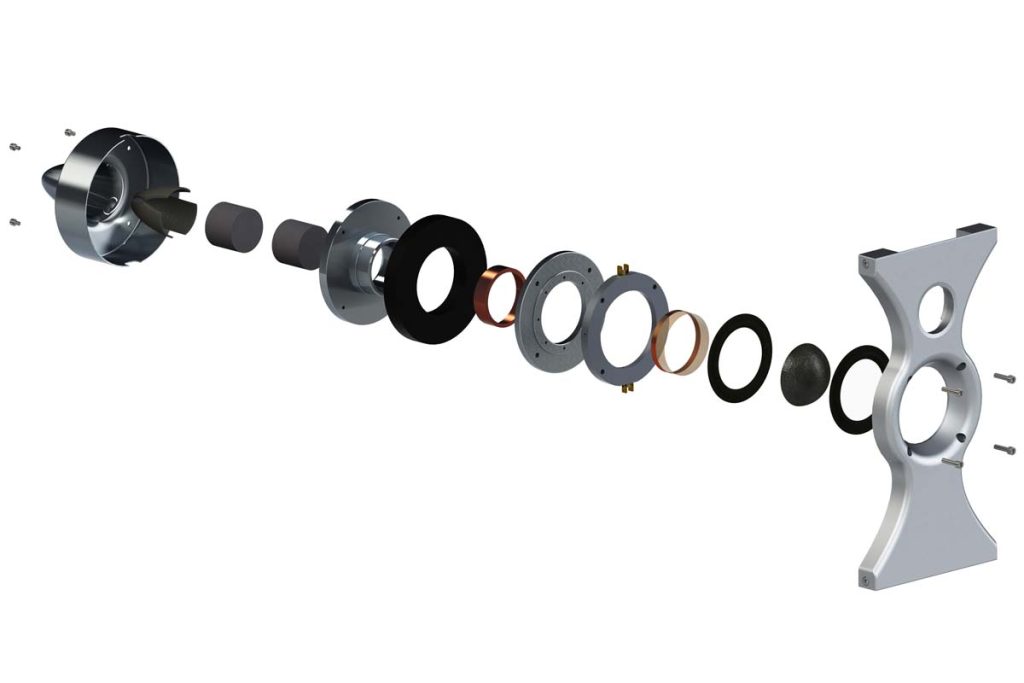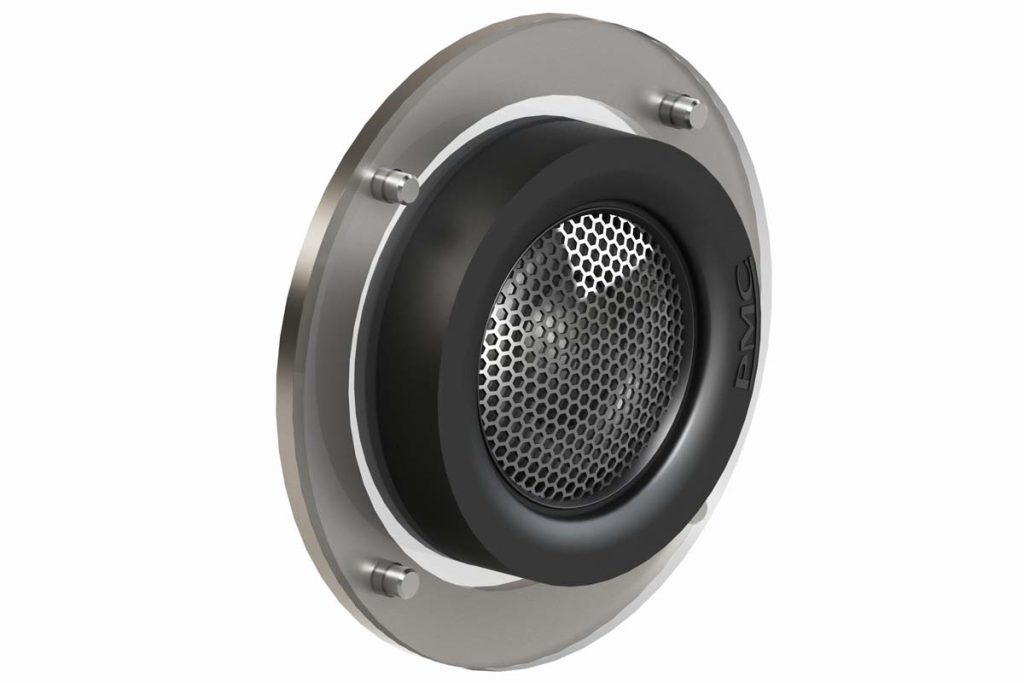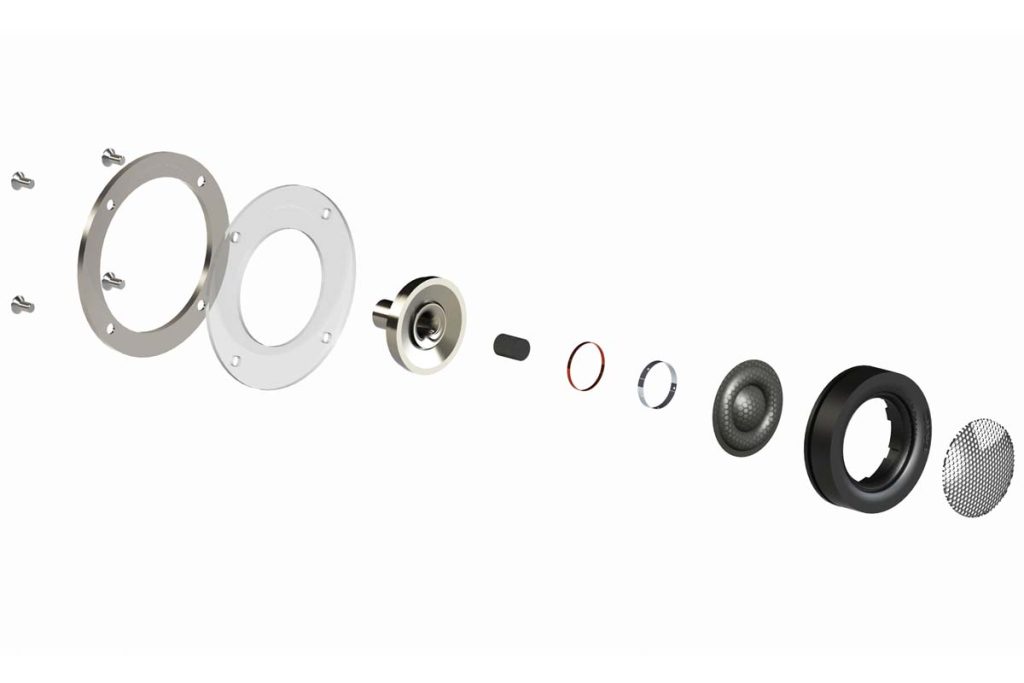The quick and tight bass response that transmission lines are known for comes, of all things, from long, folded air ducts. This illustrates a characteristic that shows with the PMC Fact Fenestria across the entire frequency band: The Brits have fired off a whole battery of unusual technical approaches to achieve one simple goal – to transport musical truth directly to the listener’s ear.
PMC lead developer Toby Ridley did seem a bit worried that I might treat them poorly. As he was leaving our office, he turned around on the doorstep: “Do promise me that you’ll really give them the beans, yes?” No worries at all, pinky promise! The fact that Ridley, together with Creative Director Keith Tonge and Besser Distribution Managing Director Udo Besser, were directly on site to set up and expertly dial in the PMC Fact Fenestria is to a certain extent due to the fortunate circumstance that FIDELITY has set up its headquarters comparatively close to the Munich MOC, where the loudspeakers had been demonstrated to the HIGH END audience just a few days earlier. So it was only natural that we were more than happy to take the Fact Fenestria under our wing for some time afterwards.
As you would expect from true professionals, the Brits approached the set-up with a mixture of good humor and great seriousness, and the procedure essentially took the entire day. What struck us was that they hadn’t taken any measuring tools along. As masters of their trade, they have all the necessary measuring equipment built right into their ears, because ultimately the deciding factor for them is not whether the loudspeakers produce nice measurement plots, but whether music sounds as it should. So instead of measuring, they kept listening, and before we knew it, they proceeded to turn the listening room upside down: Acoustic modules and furniture were moved, rearranged, moved around again, or the couch was placed alternately a few centimeters forward and backward, until suddenly a satisfied smile was drawn around everyone’s mouth.
In the professional environment, their passion allowed PMC (Professional Monitor Company) to make quite a name for themselves right from the start. The list of references is correspondingly long: BBC, Metropolis Mastering and Emile Berliner Studios are among the clientele, as are music greats Stevie Wonder, Robbie Williams and Brian May. The home loudspeakers are supposed to differ from PMC’s reference monitors only by their more living-room-friendly appearance; the sound signature, on the other hand, is supposed to be identical to the professional monitoring tools, i.e. essentially non-existent. As a monitor manufacturer, PMC naturally indulges in the linear smooth frequency response and also otherwise impeccable measured performance. Nevertheless, the British are under no illusion that everything that makes up the sound of a loudspeaker could be captured in sober numbers and graphs. It’s only once the strict objective criteria have been met that the real work begins for Toby Ridley: At each point of the crossover, he tries out a wide variety of capacitors, coils and resistors, each with identical values, and conducts listening tests to determine which component sounds best at which juncture. “If I do my work well, they let me out into the sunshine for a short while afterwards,” he jokingly describes his work-life balance.
But even in the implementation of measured performance, PMC makes an unusually high effort and also takes the odd unconventional path, the most typical of which is certainly the use of transmission lines instead of bass reflex enclosures. Of course, PMC did not invent the concept; the principle has been known since the 1930s, but it traditionally suffers from the required length of the line, which according to general doctrine must be a quarter of the resonant frequency wavelength and consequently typically leads to refrigerator-sized cabinets. From the beginning, PMC set out to make this technology more manageable and compact. In the meantime, decades of research have gone into determining the optimum taper ratio of the neck of the line to the outlet opening, as well as the choice of insulating foams used, which, thanks to their porous structure, reduce the effective sound velocity inside by almost one third – this allows the line to be shortened accordingly and still achieve the same low tuning frequency. Towards the end of the 1990s, PMC thus managed to make the transmission line presentable in hi-fi, and a few years later the manufacturer presented the compact DB 1, the world’s smallest loudspeaker of this design. The Fact Fenestria is far from challenging this title, but it can offer a separate transmission line for each of the two bass cabinets. Each module is driven by two 17-centimeter woofers, whose flat sandwich diaphragm consists of two ultra-thin carbon fiber layers enclosing a diaphragm core made of a special hard foam.
The demands on the diaphragm material were unusually high here, because one of the parameters in the development of transmission lines is the efficiency of the coupling of the drivers to the air column behind them. In the case of the Fact Fenestria, the connection at the tuning frequency is so efficient and thus so rigid that the vibrating air column would simply tear conventional diaphragms apart.
In view of the enormous forces at work here, the Fact Fenestria has come up with a number of ideas to curb unwelcome vibrations. The most striking feature is the four curved side wings that form the outer cladding and are elastically connected to the housings of the woofer units. The elegant design solution, which gives the man-sized loudspeakers an open and light appearance, also has an acoustic function: the hardness of the suspension elements and the weight of the wings have been chosen precisely so that the system forms a tuned mass damper: When the side walls of the bass cabinets vibrate at their natural frequency, the outer shells resonate relative to them in antiphase at the same frequency and amplitude – in absolute terms, they thus simply stand still and accordingly emit no sound to the surroundings. This trick has been copied from the construction of skyscrapers, in which heavy pendulums catch vibrations in the same way during earthquakes, for example. As a pleasant side effect, the wings are easily replaceable – so if you get bored with the chosen veneer after a few years, it can simply be replaced at a manageable price.
To ensure that the higher pitches remain unaffected by the low-frequency power, PMC uses an aluminum milled carrier as the midrange-tweeter unit, which is elastically decoupled from the main cabinet and in which the midrange and tweeter are in turn floatingly mounted. The midrange driver is not a cone driver, as is usually the case, but a 75-millimeter fabric dome tweeter, which promises high resolution and natural tonality thanks to its significantly lower mass. Even though the driver is comparatively small and light, it can by no means be accused of being delicate: With its generously sized surround, it offers ample excursion reserves, which, among other things, allows for a crossover frequency to the woofers of 380 Hertz – remarkable for this type of driver. And when a driver is considered suitable by PMC for use in their speakers, you know it can take a beating. During the setup procedure, Toby Ridley reported with a smile that he had already seen the odd tweeter voice coil glow through the silk diaphragm during testing – so it certainly took a little time to get the 19-millimeter tweeter, for example, to the point where it was up to the power handling requirements.
Since the guys have put so much effort into giving the Fact Fenestria solid power handling, it would be rude not to give them their due, so I start the listening session with “Raining Rock” from the eponymous album by British neo-hard rockers Jettblack. With its screeching riffs and shamelessly ragged lyrics, the 2012 track could easily be from the late eighties and fit in seamlessly among the likes of Mötley Crüe and Skid Row. Via the fact Fenestria, it can also make the lamp sockets in our listening room chirp. I’m particularly impressed, however, not by the sheer volume, but by the effortless control the speakers maintain over the musical action at all times. And: for all the fun they have, they consistently refrain from any gimmickry. Tonally, the Fact Fenestria is a prime example of tonal balance and signal fidelity; at absolutely no point is anything over- or underemphasized, the bass reaches down to the deepest cellar, but never lays on too thickly and, when called for, is as bone-dry, fast and direct as I have rarely heard – if ever.
Of course, a high-end speaker has to be able to do much more than just bang in a controlled manner. I therefore – after giving myself a break the length of a cup of coffee to let the ringing in my ears subside – put in some more audiophile fare with Holly Cole’s Shade. “A Cottage For Sale” features a Hammond organ solo that begins with a rapidly rising sequence of notes with the singer cackling along gutturally – I’ve never heard organ and voice so clearly separated before. Even more than before, the Fact Fenestria once again demonstrates its impeccable tuning: The timbre of the voice as well as all instruments always hits the spot, but never regresses into sounding sober or even analytical. On “Midnight Sun” from the same album, she not only stretches the space between Holly Cole’s clearly and directly captured voice and the strings in the background impressively wide open, but also combines the few elements of the sparsely but effectively arranged piece into an unexpectedly opulent whole that effortlessly fills the room with atmosphere.
The lengthy component juggling has absolutely paid off: even though overall, the PMC Fact Fenestria displays a relentlessly direct pace without any acoustic retouching, it is still exquisitely musical: It shows the listener only what is on the recording, and it shows all of it – but it presents it in the absolute best possible light. It’s crazy how much fun truth can be!
Accompanying Equipment
CD-Player: Ayon CD-3sx, Audio Note CD 5.1x | Streamer/DAC: Lumin P1, X-odos xo|stream | Pre-/power amp combo: AVM Streaming DAC SD6.8, MA8.3 monoblocks | Integrated amplifier: Aavik I-580 | Loudspeakers: Wilson Audio Sasha DAW, Voxativ 9.87 | Rack: Solidsteel, Creaktiv, Finite Elemente | Cables: AudioQuest, in-akustik, Furutech
Floorstanding Loudspeaker
PMC Fact Fenestria
Concept: passive three-way floorstanding loudspeaker | Driver complement: 4 x 17-cm-woofers, 75-mm dome midrange, 19-mm sonomex fabric dome tweeter | Frequency range: 23 Hz bis 25 kHz | Nominal impedance: 4 Ω | Sensitivity: 86 dB | Special features: Multi-module design comprising two transmissionline bass modules and a machined aluminum midrange/treble unit; interchangeable side panels acting a tuned mass dampers; rhodium tri-wiring terminal featureing adjustable treble and bass levels | Finishes: Tiger Ebony, Walnut, Matte White | Dimensions (W/H/D): 37/170/62 cm | Weight: ca. 80 kg | Warranty period: 20 years upon registration | Price per pair: around 90 000 €

